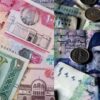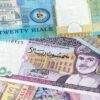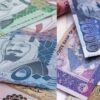Transformative Economics under Mehmed the Conqueror
Sultan Mehmed II, known as Mehmed the Conqueror, is hailed for his extraordinary achievements during his reign over the Ottoman Empire. Beyond his conquests, his financial reforms laid the bedrock for a thriving empire, turning it into an economic powerhouse. This blog post explores the economic improvements implemented under his rule, providing insights into how they reinforced the empire’s prosperity and stability. Students will gain a comprehensive understanding of how these reforms were pivotal in shaping the Ottoman Empire’s economic landscape.
The Need for Financial Reforms
When Mehmed II ascended to the throne, he inherited an empire with immense potential but also significant challenges. The Ottomans were expanding rapidly, and with this growth came substantial financial strain. Wars and conquests required constant funding, while maintaining a formidable military force added to the economic pressure. Mehmed’s vision was clear—he desired an economically self-sufficient empire that could sustain its ambitions without over-reliance on external resources.

To achieve this, Mehmed recognized the need for robust financial reforms. The existing economic system was fragmented, with inconsistent tax policies and widespread corruption. The lack of a stable economy threatened the empire’s ability to support its growth. Mehmed’s reforms aimed at creating a cohesive financial structure that could underpin the empire’s expansion and ensure its long-term sustainability.
To address these challenges, Mehmed embarked on a mission to overhaul the empire’s financial apparatus. By standardizing tax systems, redistributing land, and reforming monetary policies, he sought to strengthen the economic foundation of the empire. His reforms would not only address immediate financial concerns but also lay the groundwork for future prosperity.
Tax Reforms
One of Mehmed’s significant achievements was the revision and standardization of the tax system. The empire’s revenue base was crucial for funding its military campaigns and maintaining state functions. Under Mehmed, new taxes such as the “avarız,” an extraordinary wartime tax, were introduced. This tax specifically aimed to generate funds during periods of conflict, ensuring that the empire could sustain its conquests and defend its territories.
Streamlining tax collection was another critical aspect of Mehmed’s reforms. The previous system was plagued by corruption and inefficiencies, leading to uneven tax collection across different regions. Mehmed’s approach ensured that taxes were collected fairly, reducing the burden on ordinary citizens and increasing state revenues. This equitable taxation system fostered trust and compliance among the populace.
Balancing taxation between Muslims and non-Muslims was also a priority. The “jizya,” a tax on non-Muslims, and “zakat,” a religious alms tax for Muslims, were both carefully regulated. This balance ensured that all subjects contributed to the state’s coffers while respecting religious differences. By integrating these tax policies, Mehmed created a harmonious financial environment that promoted economic growth.
Land Ownership and Agricultural Reforms
Land ownership was another area where Mehmed implemented significant reforms. The introduction of the “timar” system revolutionized the empire’s approach to land distribution. Under this system, soldiers were granted land in exchange for military service. This not only rewarded loyalty but also ensured a steady supply of troops. The timar system created a mutually beneficial relationship between the state and its soldiers.
Encouraging agricultural development was crucial for supporting the empire’s growing population. Mehmed incentivized farmers by granting them land on the condition of productivity. This policy stimulated agricultural output, making rural regions economically productive and capable of supplying food for both civilians and the military. By fostering agriculture, Mehmed ensured a stable food supply and mitigated the risk of shortages and inflation.
Mehmed’s focus on rural productivity extended to policies aimed at maintaining and increasing food production. By implementing measures to prevent food shortages, the empire could sustain its military campaigns and domestic needs. These agricultural reforms were instrumental in creating a self-sustaining economy capable of supporting the empire’s ambitions.
Coinage and Monetary Reforms
Standardization of currency was a critical aspect of Mehmed’s financial reforms. A stable monetary system was essential for facilitating trade and economic transactions. Under Mehmed, new coins, including gold and silver currencies, were introduced. These coins provided a reliable medium of exchange, enhancing commercial activities and fostering economic growth.
Controlling minting and currency circulation was another priority. Counterfeiting and inflation posed significant threats to the economy. Mehmed tightened control over the minting process, ensuring that coins were of consistent quality and value. This measure bolstered confidence in the currency and prevented inflationary pressures, contributing to a stable and prosperous economy.
By establishing a stable monetary system, Mehmed created an environment conducive to trade and commerce. The reliability of the currency encouraged both domestic and international trade, enabling the empire to thrive economically.
Encouragement of Trade and Commerce
Mehmed recognized the importance of trade as a driver of economic growth. He implemented policies to encourage both domestic and international trade. By developing key trade routes, including restoring the Silk Road and strengthening naval power, the empire could control vital sea routes. This strategic control facilitated the safe passage of goods, attracting merchants from various regions.
Establishing trade agreements and alliances with neighboring states and European powers was another important step. These agreements ensured safe trade passage and expanded the empire’s commercial reach. Mehmed’s diplomatic efforts resulted in increased trade opportunities, further boosting the empire’s economy.
Rebuilding Constantinople (Istanbul) into a major trade hub was a significant achievement. The city became a magnet for merchants, offering a vibrant marketplace for goods from across the world. This transformation of Istanbul into a global trade center solidified the empire’s position as a dominant economic power.
Development of Urban Centers
Urban development was a key component of Mehmed’s economic vision. He invested in urban infrastructure to stimulate economic activity. The construction of markets, caravanserais, and workshops, particularly in Istanbul, created a bustling environment for commerce and manufacturing. These developments attracted artisans and merchants, fueling economic growth.
Expanding artisan guilds and regulating their activities improved the quality of goods produced in the empire. This emphasis on craftsmanship elevated the empire’s products, enhancing their competitiveness in international markets. Mehmed’s policies ensured that the empire’s goods met high standards, further boosting its economic reputation.
Enhancing city layouts accommodated growing populations and commerce. Mehmed’s investments in urban infrastructure created cities that were not only functional but also attractive to residents and traders alike. These vibrant urban centers became engines of economic prosperity, contributing to the overall success of the empire’s economy.
Revenue from Conquests
Conquests were not only about territorial expansion but also a means of generating revenue. Mehmed exploited the wealth of newly conquered territories to fund further expansions and state-building projects. The distribution of booty (ghanimah) among the military ensured loyalty and motivation. At the same time, a portion of the wealth was channeled into the state treasury, supporting the empire’s financial stability.
Mehmed’s policies ensured that the wealth from conquered lands contributed to the overall economy rather than benefiting a few elites. This equitable distribution of resources strengthened the empire’s financial position and enabled continued growth and prosperity.
The wealth generated from conquests played a crucial role in funding the empire’s ambitious projects and maintaining its military prowess. Mehmed’s strategic use of resources ensured that the empire’s economic engine remained robust.
Protection of Merchants and Artisans
Mehmed recognized the vital role of merchants and artisans in the empire’s economy. Legal reforms were implemented to protect them from exploitation and ensure their contributions to the economy were valued. Regulated markets were established, where goods could be bought and sold under the watchful eye of state officials. This regulation fostered fair trade practices and minimized corruption.
Promoting the growth of skilled labor and industries such as textiles, ceramics, and weaponry was another key focus. These industries became pillars of the empire’s economic strength, producing high-quality goods for both domestic use and export. Mehmed’s support for artisans and merchants ensured that the empire’s economy remained dynamic and competitive.
By safeguarding the interests of merchants and artisans, Mehmed created an environment where economic activity could flourish. This protection encouraged entrepreneurship and innovation, driving the empire’s economic success.
Encouragement of Foreign Investment
Foreign investment was an essential component of Mehmed’s economic strategy. Policies were implemented to attract foreign merchants, bankers, and traders to invest in the Ottoman economy. Guarantees of safe passage and legal protection for foreign traders operating within Ottoman lands instilled confidence and encouraged business activities.
Mehmed’s economic policies made the empire a favorable place for business. The influx of foreign capital and expertise contributed to the empire’s economic growth and diversification. By welcoming foreign investors, Mehmed expanded the empire’s economic horizons and solidified its position as a global economic power.
The encouragement of foreign investment fostered economic collaboration and exchange, resulting in increased prosperity for the empire. Mehmed’s vision of a thriving, interconnected economy became a reality through these strategic initiatives.
Legacy of Mehmed II’s Financial Reforms
The impact of Mehmed’s financial reforms extended far beyond his reign. His economic improvements laid the foundation for the stability and growth of the Ottoman Empire. Future sultans, particularly Suleiman the Magnificent, benefited from the solid economic groundwork established by Mehmed’s policies.
Mehmed’s economic legacy transformed the Ottoman Empire into a powerful and prosperous state. His reforms created a resilient economy capable of supporting military expansions and domestic prosperity. The empire’s financial stability allowed it to thrive in an increasingly competitive global landscape.
By understanding the significance of Mehmed’s financial reforms, students can appreciate the broader context of the Ottoman Empire’s rise to prominence. His visionary policies continue to serve as a testament to the importance of sound economic governance in achieving lasting success.
Conclusion
Sultan Mehmed II’s financial reforms were instrumental in establishing a strong economic foundation for the Ottoman Empire. By addressing the challenges inherited and implementing strategic policies, he created a thriving and self-sufficient economy. His tax reforms, land redistribution, monetary policies, and encouragement of trade and commerce were pivotal in shaping the empire’s financial landscape.
Mehmed’s economic improvements supported military expansions, sustained domestic prosperity, and ensured the empire’s long-term success. His visionary approach to economic governance transformed the Ottoman Empire into a formidable global power.
For students, understanding Mehmed’s financial reforms provides valuable insights into the importance of sound economic policies in shaping the course of history. His legacy serves as a reminder of how strategic economic decisions can lead to enduring prosperity and influence future generations.











